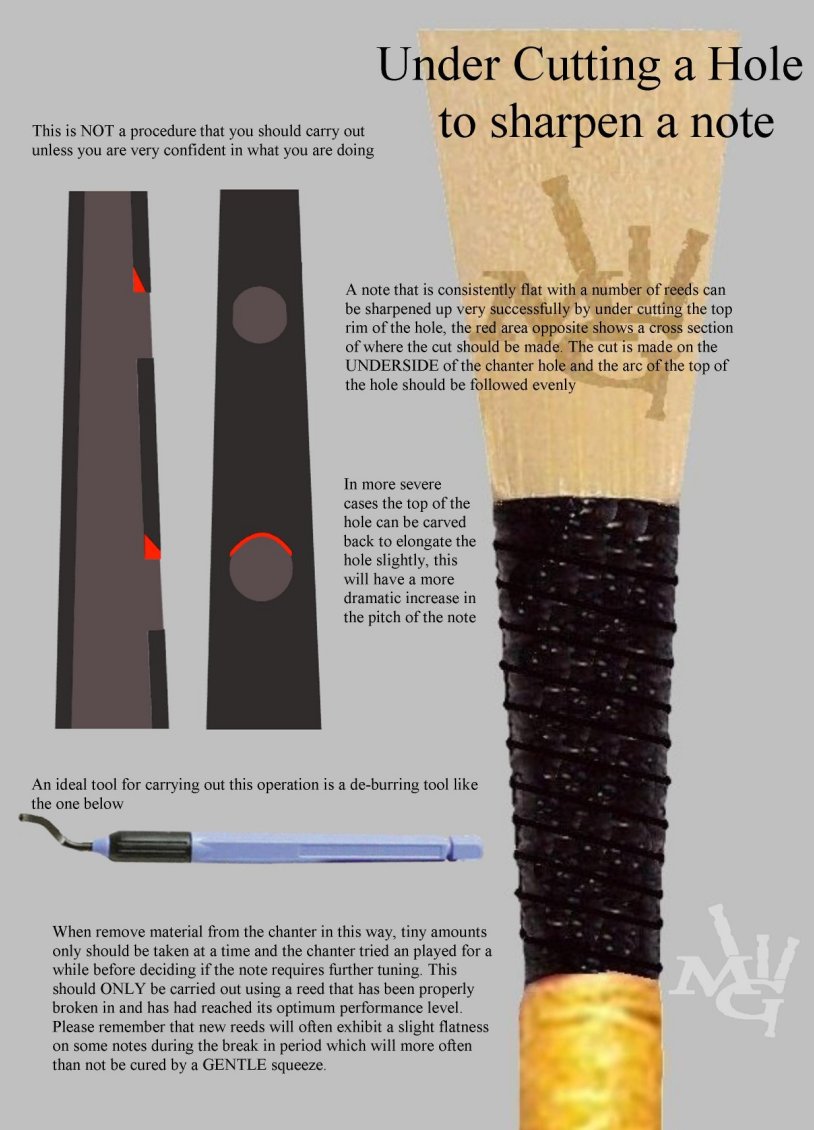Tuning a chanter
You can tape and undercut the chanter's tone holes as indicated in the charts below. Taping is a simple process, but be cautious if you undercut a tone hole. If you're unsure, consult a professional.
Taping to flatten a note
When tuning a chanter, the tape on the sound hole influences the low A, and the tape on the low A affects the E. These effects are slight and depend on the amount of tape.
When you tape the sound hole, the low A flattens and the drones are retuned to it, causing the other notes to sharpen as a result.
Here is the confusing part. As the amount of tape increases on the sound hole it will also start to flatten the E. This flattening of the E will be at a greater rate of the effective sharpening due to the flattening of the low A. Yes read that again it is confusing.

Undercutting tone holes to sharpen
You should only attempt this if you are confident in what you are doing. If you have doubts, seek professional advice.
If a note consistently appears flat when played with various reeds from different makers, you should consider sharpening it by undercutting the chanter, ensure that the flatness is an inherent characteristic and not the result of underblowing a reed. See also chanter reed manipulation.
Blackwood and metal working de-burring tools effectively carry out undercutting.
When you undercut the tone hole, angle the removal of the wood (or plastic) from its inner, upper side at approximately 30 degrees to maintain the tone hole's shape.
The chart below provides further guidance.

